Essential Guide to Over 110 Cruise Ship Terms (and Commonly Used Nautical and Boating Jargon)
Boating seems like another world sometimes and we want to help with providing you with an essential guide to over 110 cruise ship terms and commonly used boating jargon.
This is most helpful if it's your first time at sea or you haven't been in a while and need a refresher.
There's a million terms we won't get into here. It would become unnecessarily technical and too long of a post!
For purposes of our cruise ship terms and nautical jargon list we have kept it to guests level terms on ships, not to complicated terms that get into the weeds for ship crew.
Whether you're on a sailboat and hear someone ask you to help with the lines on the jib (huh?) or you hear a cruise announcement regarding embarkation, we know you'll want to be educated about terminology!
Disclosure: There are affiliate links in this post, which means we may earn a small commission if you click the link and proceed with a purchase, at no cost to you. We truly only recommend hotels, products, and services we personally use. As Amazon Associates, we earn from qualifying purchases.

Table of Contents
Cruise Ship Specific Terminology
These are the terms that are specific to the cruising industry, including yachting, barge cruises, river cruises and ocean cruises.
Sailaway Party
A fun event on a cruise ship (most often ocean liners) to celebrate leaving a cruise terminal or port of embarkation. It's usually on the lido deck or in the ship's atrium if weather in unfavorable. It is also often the first official event on a cruise.
Sister ship
This refers to ships that have the same blueprint as one another, yet the interiors may different for a little individualism between the two.
Solo supplement
Referred to in rates of booking. Some ships/cruises charge a fee for a solo booking because it means they’re unable to make money on a second guest in the room. We know, this sucks! However, it’s also why it’s a perk for cruise lines that do not charge a solo supplement and/or have solo stateroom options onboard.
Double-occupancy
This simply indicates two people, as in two people in a stateroom on a cruise ship. It most often refers to cruise pricing.
Deck plan
This is an incredibly helpful “map” of the ship. Imagine if you sliced a cruise ship floor by floor, looked at it from an aerial view (like an architectural floor plan of a house) and indicated what was where. That's a deck plan.
If you're on a huge ship it's imperative to use a deck plan to help you navigate your temporary vacation “home.” You can literally get lost on an ocean liner! The good news is there are usually deck plans posted on a ship in several places. (And available on the cruise ship app if you have it downloaded on your phone…and have your phone with you.)
Any crew you run into can usually help you navigate the hallways and decks of the ship too.
Lido deck
The word “lido” came from the Italian word for beach. So the Lido Deck cruise ship term refers to the deck onboard with the pool and bars. This deck is usually where a lot of the pool programming happens, a sail away party, etc. It's one of the top-most decks of a cruise ship.
This perhaps evokes thoughts of old-timey cruising, like in the 80s and early 90s. Maybe a la The Love Boat. But it's still a term used today. So what is it?
Stack (or Funnel)
The cruise ship term of a stack, or funnel, refers to the functional round structure where the exhaust from the engine room escapes. Kind of like a chimney on a home when a fireplace was in use.
Often times if a ship has two stacks these days one is functional while the other is for aesthetics, housing something like a lounge inside. (Such is the case on Disney Cruise Line ships, which we personally enjoy as adults-only cruisers.)
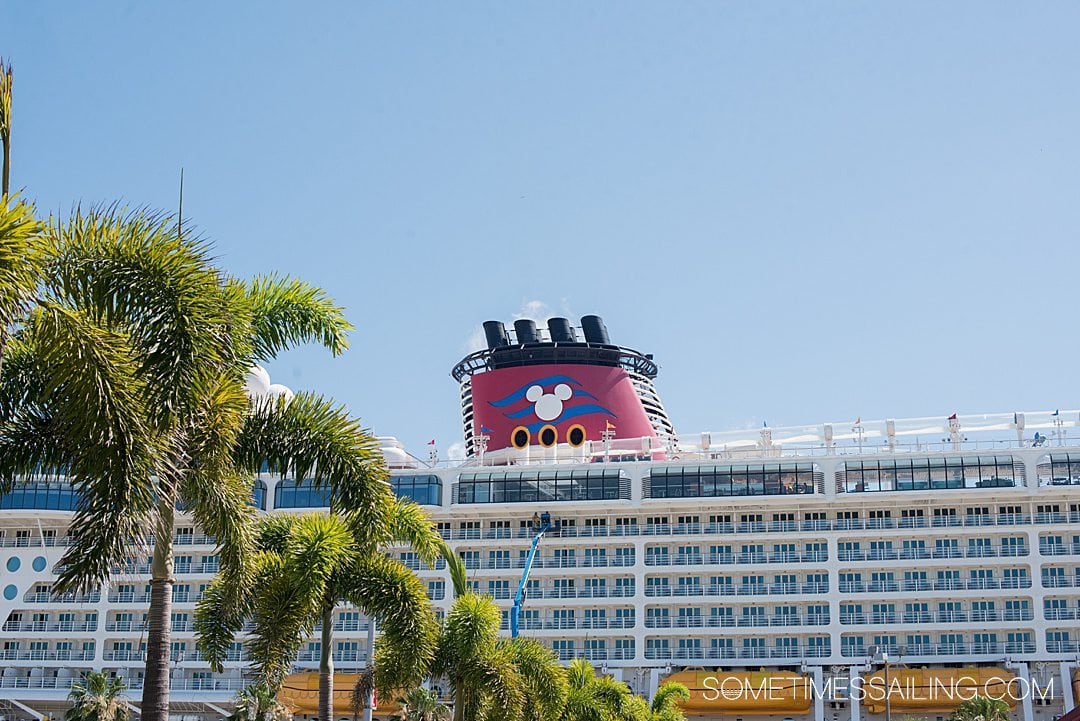
Atrium
The main lobby area of a ship that usually spans at least two stories or levels. It's usually where you first step onto a ship upon initial entry from your cruise terminal – that's because, more often than not, it's an impressive sight.
It's almost like the main hub of a ship, architecturally speaking, where you can proceed to the ship's restaurants, clubs, shopping, and the like from.
There's very often a grand staircase in a ship's atrium and it's a prime photo spot. If you want to wow your friends with impressive vacation photos from a cruise the atrium is a good place to do that.
Muster drill (or safety/lifeboat drill)
By law, all ships must have a muster drill within 24 hours of departure. Muster stations are where guests meet in case of an emergency. (Including letting guests know where life jackets are located.)
Itinerary
Cruise ship schedule of a ship. It's known as you book of course but the course may change during your sailing if there is inclement weather the captain needs to avoid, for instance.
All aboard time
The time all passengers need to be back on a ship before it leaves port. It is usually posted in a daily bulletin or newsletter or announced by the Cruise Director before they open the gangway for guests to disembark from the ship for the day.
And they will leave on time so don't be late!
Daily bulletin, newsletter or “navigator”
This may be distributed everyday of your sailing. Nowadays, a daily schedule of activities and goings on are usually available on the cruise line's app, if they have one.
Don't forget to download these helpful cruise apps before your sailing, by the way.
Onboard (or shipboard) credit
A credit applied to your stateroom bill for use on the ship.
Sometimes it's because of an incentive to book the cruise. For instance, a cruise line will offer a $250 onboard credit if you book by a certain time.
The onboard credits are great to use on things like cocktails or spa treatments.
Gratuities
It's probably known that this is another cruise ship term for “tips,” just like “gratuities” means on land. But it's important to know if they're included or an extra cost when you book your cruise.
All-inclusive cruise
These cruises are great if you to lower the variables while budgeting for a cruise. All-inclusive cruises are popular in river cruising, where your entire vacation is bundled up.
The definition of “all-inclusive” varies with each cruise line. Sometimes it includes everything, from gratuities, to your stateroom, to airfare, to premium spirits, and butler service. While it may only include your excursions, your stateroom and beer and wine with another cruise line.
The best advice for an all-inclusive rate is to ask exactly what's included.
Category (or cabin type)
This cruise ship term is in reference to the stateroom type you're booking. For instance, you may book a Category 7 cabin (or stateroom) on a cruise that corresponds to any outside option. Or a Category 8 that's an inside cabin.
There can be many categories for cruise lines, even from 3 to 20. Usually (but not always, especially if the cruise line is running a special) the more desirable the category, the higher the price tag.
Quietvox
These are small, portable electronic devices with an attached headset (like earphones) that are mostly river cruise specific.
You'll need to take your Quietvox with you for all tours included with your cruise because it's how the guides conduct tours on land. They're great – it brings their voices directly into your ears without them having to yell over a crowd and deal with other elements – be it weather or tourists – around you.
You bring your Quietvox into your stateroom each day to recharge it. The best thing to do is to place it directly back on the charger after a tour instead of laying it down on your dresser.
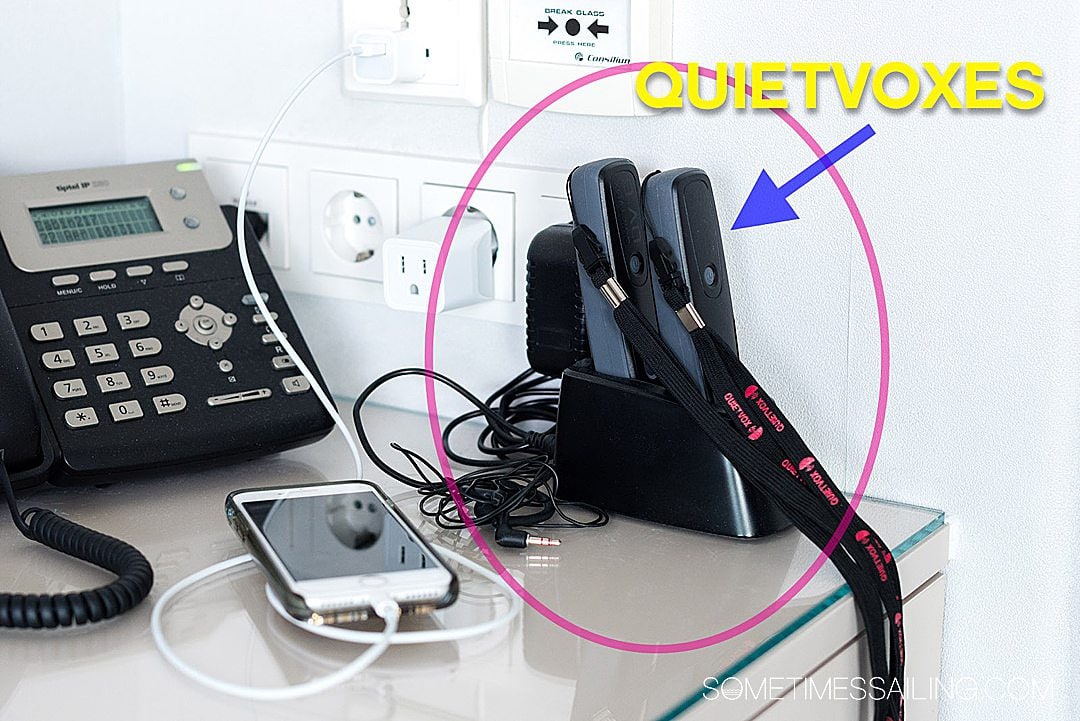
Cruise card (or key card, or ship ID card)
It's not just a key to open your cabin door. But also acts as a hotel key would, for room charges and, more importantly, checking you in and out of the ship while in port.
The ship needs to keep track of who is onboard or off and this is the way they do it. (Without micro-chipping you or adding a GPS tracker on your person, haha!)
Duty free
Tax-free shopping. You often have to declare these items you purchased while shopping abroad once you return to your cruise terminal or port of debarkation in the United States.
You can save a lot of money on high-priced items while shopping abroad, including on things like jewelry and expensive clothing.
Ocean liner
Ships that sail the ocean. They're too big to fit on rivers, which is why there are specifically river cruise ships.
Fleet
The entire portfolio of ships a cruise line owns. For example, Scenic Luxury Cruises has 16 ships in its fleet.
Christening
A cruise ship christening is a grand celebration. Launching a new cruise ship is a big deal! It usually entails media, galas, and sometimes fireworks. A fun aspect of a ship christening usually involves a ceremonial breaking of a bottle of champagne over the bow of a ship.
Godmother (or godfather)
This is generally a spokesperson chosen by a cruise line for media purposes, and to bestow good luck on a new ship. (The godmother or godfather ceremoniously christens the ship in many cases.)
If it's a female it's a godmother or if it's a male it's a godfather. It's worth noting two things: 1) It's not always a famous person, 2) It's usually a female. (But not always.)
Here are some fun godmothers of cruise ships out there:
- Dame Helen Mirren is the godmother of the Scenic Eclipse passenger ship, launched in August 2019.
- Elizabeth Gilbert, famed author of Eat Pray Love and Big Magic, is the godmother of Avalon Waterways ship, Avalon Envision, in April 2019.
- Well known travel show personality, Samantha Brown, is the godmother of the AmaWaterways ship, the AmaMagna, launched in May 2019. (Pictured below.)
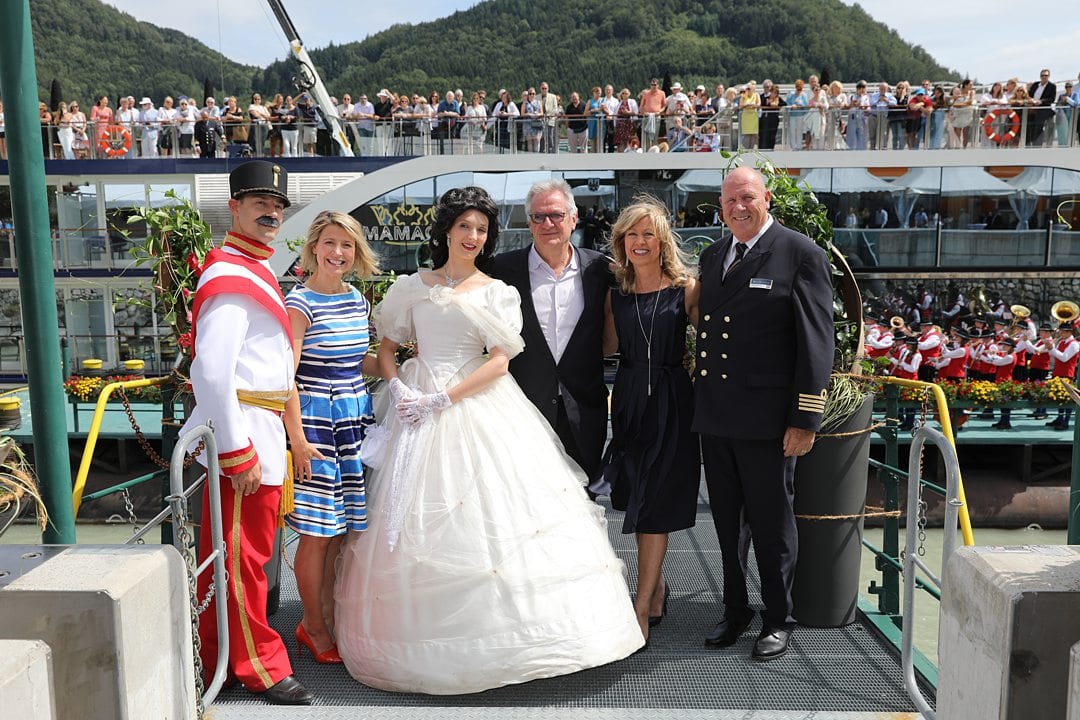
Charter (as in chartering a yacht)
When passengers book a ship for a dedicated sailing, like when a family charters a yacht or group of friends charter a sailboat for a sunset cruise. You can also charter a barge cruise. (We suppose you could charter any boat if you had enough money!)
Themed cruise
Often times a cruise line will create an itinerary with a specific interest in mind. This is great marketing as it's trying to reach a target audience with proven interest in the subject.
Examples are a WWII history river cruise through Normandy, France or a wine cruise through the Burgundy region.
Windstar offers a Rome and Grand Prix of Monaco themed sailing, perfect for a Formula One racing enthusiast. It includes access to private events, a special Formula One guest speaker onboard to give a behind-the-scenes look at the race and even a visit to the pit afterwards.

Types of cruises
Canal cruise
Refers to something like a barge cruise or river cruise depending on who is saying it and how it's used. (Unless it refers to something like the Panama Canal, a place larger ocean liners can sail through.)
Barge cruise
These are usually the smallest size cruise you can sign up for. They're usually anywhere from 6 to 12 people. It's like a floating hotel that can go on very small waterways, even the Seine River that passes Notre Dame and Ile de la Cite in Paris.
Expedition cruise
Feeling adventurous? An expedition cruise could be the remedy.
Expedition cruise lines, like Uncruise and Quark Expeditions, set out to quench your thirst for adventure, even if only for a limited time aboard their ships and experiencing their excursions.
You'll very often hear Alaska or Antarctica sailings referred to as “expedition cruises.”. Usually, there's a strong emphasis on the journey of the ships and their itineraries including what ports of call they go to and the excursions you can take part in once there.
River cruise
We absolutely love river cruising! Whether you're on a river cruise in America (like on the Mississippi, Columbia or Snake Rivers), or a European River Cruise (like on the Danube River, Douro or Rhine Rivers), these small cruise ships are built to navigate the calm waters of rivers.
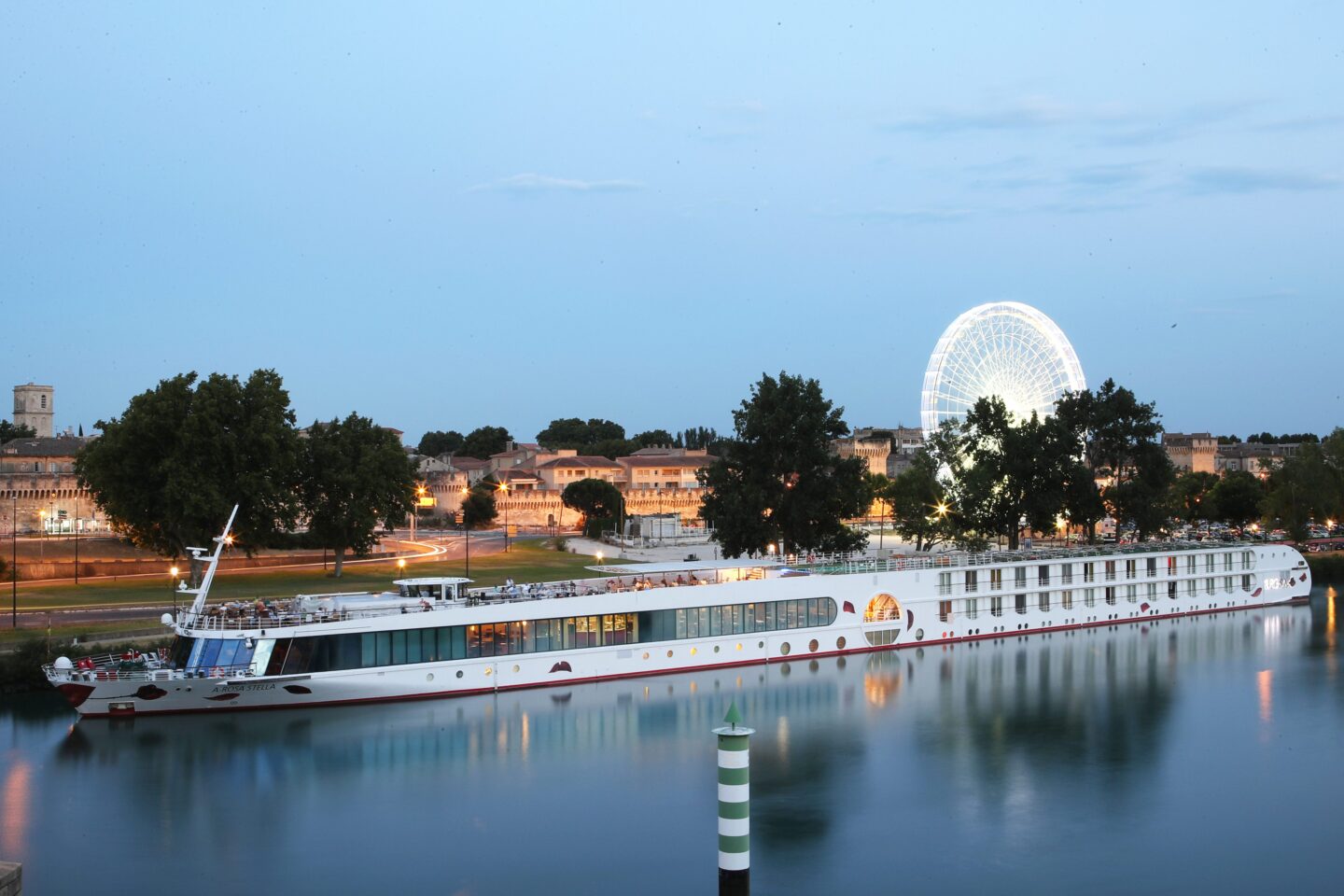
Day cruise
A cruise that you're on for a few hours without staying overnight. This isn't typical of river or ocean cruises unless the media or press is getting a tour.
Rather, we're referring to things like a boating excursion or fun catamaran tour for the day.
Charter (as in chartering a yacht)
When passengers book a ship for a dedicated sailing, like when a family charters a yacht or group of friends charter a sailboat for a sunset cruise. You can also charter a barge cruise. (We suppose you could charter any boat if you had enough money!)

Cruise Ship Dining Terminology
Maitre d'Hotel (Maitre d', for short)
The person in charge of a cruise ship's restaurant, including the waitstaff.
Literally translated from French to English, “maitre” means master.
Assigned seating
When you're assigned a table for cruise ship dining. Often times it's dinner-specific as you have open dining for breakfast and lunch during your cruise.
It's likely you'll be seated with another group or additional couples if you're only a small party, like a party of two.
Open seating (or open dining)
The opposite of assigned seating. Open seating allows you to choose where you sit in a restaurant or dining room.
First seating or second seating
On larger cruise ships that need to do dining in shifts due to the amount of restaurants and passengers they have, you can opt for the first or second seating.
The first seating is of course earlier in the evening around 6:00pm or 7:00pm. (It's perfect for people who go to bed early and/or have children.) and the second seating is later, usually around 8:00pm or 9:00pm.
Captain's table
When you're invited to dine with the captain. It's an honor – you should accept!

Boating Jargon for a Ship's “Anatomy” (and Related Terms)
Port
The left side of a ship.
Here's how we remember if port or starboard is left or right: P comes before S, just like in English we read left to right. Left comes before right, P comes before S. Port = Left, Starboard = Right
We also use this handy trick: Port = 4 letters, just like “left.”
Starboard
Right side of a ship (how we remember if port or starboard is left or right? Read all about Port vs Starboard here!)
Aft
The rearmost part of a boat, inside.
Stern
The rearmost part of a boat, outside.
Midship
The middle of a ship.
Bow
Front of a boat.
Overall length
The length of a ship from end to end, stern to bow.
Waterline length
The length of a ship that is actually sitting in the water.
Stateroom (or cabin)
Your room onboard a ship (used interchangeably with “cabin”).
Inside stateroom (or cabin)
Room that is in the interior of a deck plan, meaning there isn't a porthole (or window) in the room to the outside.
Outside stateroom (or cabin)
Outside room on a ship's deck plan. Kind of like a room on the perimeter. They usually have at least a porthole so you can see the water, if not a balcony. (You know if there's a balcony or not know when you book your stateroom or cruise category.)
Obstructed view stateroom (or cabin)
You may have an outside cabin on a cruise ship, but beware if it says “obstructed.” They usually cost less than balcony room or unobstructed views (for obvious reasons).
The obstruction could be something like equipment on the exterior of the ship or simply an obstruction in the porthole due to the architecture of how the room had to be designed in that area of the deck plan.
Veranda
Fancy lingo for “balcony!” A stateroom with a balcony may be called a “veranda stateroom.”
French balcony
An balcony on the interior of an outside stateroom, that is usually either retrofitted on older cruise ships or added to lower category staterooms. It's a balcony that's inside the room yet a panoramic wall-to-wall window open (like is the case with a panorama room on Emerald Waterways) to create a balcony.
This is a wonderful design solution for river cruise ships, especially, who have strict limitations on their ship widths.
Virtual balcony
Technical innovation is really amazing! Virtual balconies were created to give inside staterooms the view of a balcony room on the outside of the ship.
Floor-to-ceiling and wall-to-wall screens are used for the effect. They usually have a real-time view of what the outside staterooms with balconies can view. And they often have curtains on either side of the screen that you can open and close.
Virtual porthole
Like a virtual balcony, virtual portholes are added to inside staterooms to give the room the “feel” of a window (or porthole) without actually having access to such a view.
Head
This is mostly a term on a ship like a sailboat, not necessarily a cruise ship. But it's a synonym for bathroom.
Berth
Another word for a bed on a ship. (Or another term for the slip where a boat pulls in to dock, as in “berthing.”)
Helm
The area of the ship where you steer the boat.
Hull
The part of the boat that makes sure you're actually floating and have a shell, if you will, to float! Being watertight is a must since it's what is physically in the water.
Porthole
Ship jargon for a window on a ship. They're usually circular.
Wheel
Granted this one's obvious but we like to think of good ‘ole sailboat steering wheels when we think of the wheel of a ship like our adventure with Maine Windjammer on Schooner American Eagle. And a captain, feeling home at sea, steering the ship.
Mast
On a small sailboat, this is the singular vertical pole that rises many feet above the hull. But on bigger boats there may be many masts. Sometimes the number of masts even helps to indicate what type of boat it is.
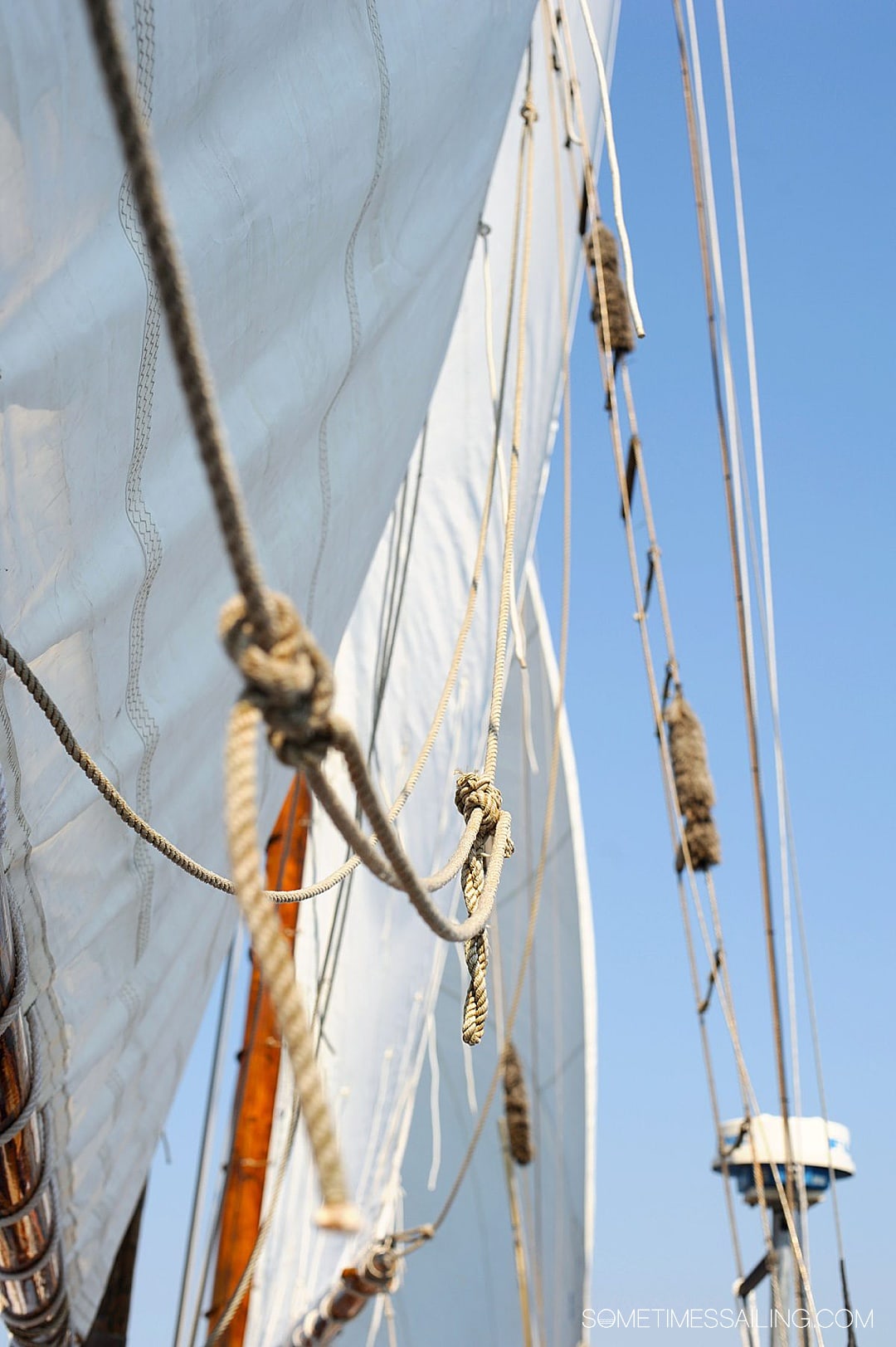
Mainsail
The largest, most important sail on a boat whose bottom length is attached to a boom. (Also what Sea Bags from Maine make a lot of their recycled sail bags from!)
Boom
A long pole with a thick diameter that runs the bottom length of the mainsail.
Jib
Another sail on a sailboat, that comes second in line in order of importance after the mainsail. The jib, however, doesn't have a boom.
Rudder
The vertical, structural piece of a ship whose purpose is to control steering
Lines
Ropes on a ship…if you're feeling fancy.
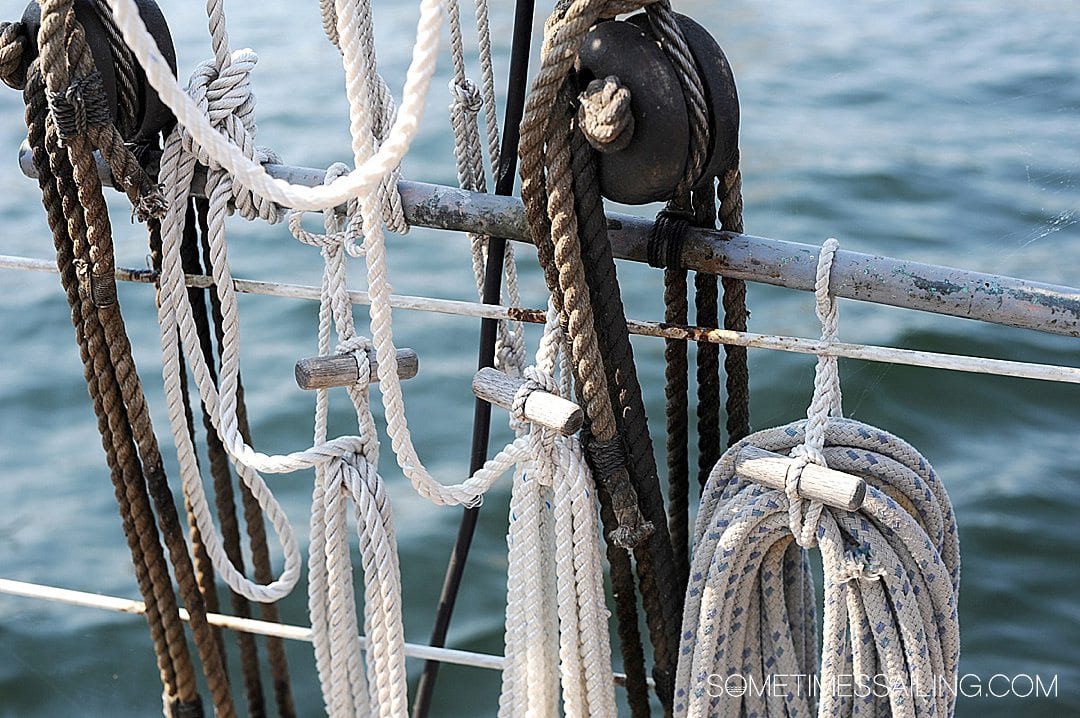
Anchor
Most people know that an anchor is dropped to keep a ship from drifting off when the captain wants it to remain stationery while floating in the middle of a waterway. This is opposed to a pier, where a boat can usually be tied to a dock or boat slip.
But did you know that an anchor is shaped the way it is to help grip the ocean (or waterway) floor?
Stabilizers
These quite literally help stabilize the motion of a ship so you don't feel the motion of the ocean as much.
There's been great advancements in stabilizer technology so it also doesn't rock the ocean and its inhabitants beneath the surface of the water.
Bridge
The command station of the ship. It's where someone captains the ship from and where someone is on lookout.
Gangway
The walkway used to connect a boat to the dock. On cruises, guests walk off the gangway to the port or destination.
Galley
The kitchen on a ship. (And one of my favorite places because of course dining on a ship is one of the best activities!)
Many cruises will offer a tour of the galley during the sailing. And if they do – sign up! You learn so much during them.
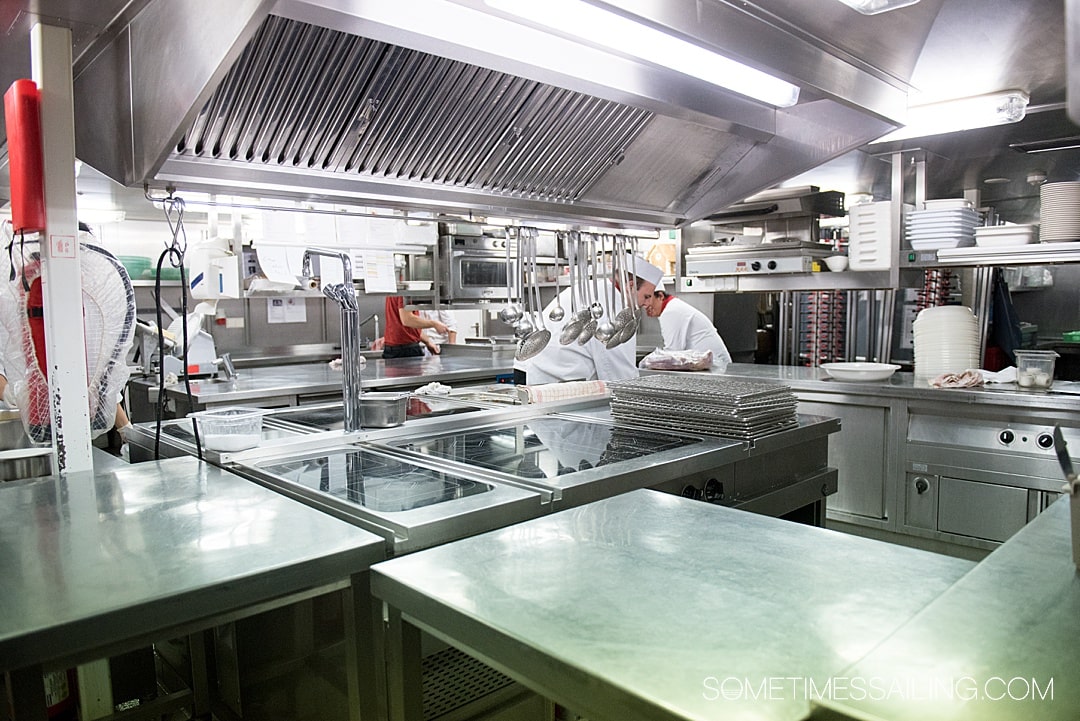

Ship Sailing (or Directional) Terms
Sailing
You can “go sailing,” but it's often used as a noun as well. Your “sailing” also refers to the cruise vacation you're taking. For example, “Our sailing leaves from the Port of Miami on April 22.”
Day at sea (or sea day)
A day when the ship is simply sailing on the water and doesn't dock or enter a port of call.
These are great days to enjoy a cruise ship's amenities, including its pools and spa.
Crossing
A cruise journey across a large body of water. Example: Atlantic Crossing, in which a cruise ship may sail from the east coast of the United States across the Atlantic Ocean to a destination in Europe, like Portugal. (Or a crossing across the Pacific Ocean.)
Transatlantic
A crossing cruise that goes across the Atlantic ocean.
Repositioning cruise
A sailing where a cruise ship “repositions” to another part of the world. For example, a cruise ship perhaps does 12 weeks in the Caribbean then “repositions” to the Mediterranean for 8 weeks.
Cruise to nowhere
A cruise that doesn't dock or go to any ports of call during the sailing. It's simply a few days at sea, for instance.
Closed-loop cruise
A cruise that starts and ends at the same port of embarkation or cruise terminal.
Open-jaw cruise
A cruise that starts and ends at different ports of embarkation or cruise terminals. (The same term is used for airline tickets that depart and return to different cities. It's called an “open-jaw ticket.”)
Embarkation (or Departure) port
Where your cruise begins. (Yay!)
Disembarkation
When you sadly leave your cruise at the end of your journey.
Double-dip (or back-to-back)
When people sail on back-to-back cruises.
Inaugural sailing
The first sailing after a new cruise ship is launched or after it returns to sea after a length of time offline, like when a ship is newly modeled after being dry-docked for a while.
Turnaround day
The day a ship's back in port or a cruise terminal between cruises. It's used to restock the boat, do repairs, get the cabins back in order and cleaned or sanitized, etc.
“Day” is actually being generous – there is usually only hours between when one sailing's guests depart and the next round of guests begins to board.
Mooring
This boating or cruise ship term refers to any permanent structure a ship can be attached to in order to prevent it from drifting from the wind or a current. This could include a dock or jetty.
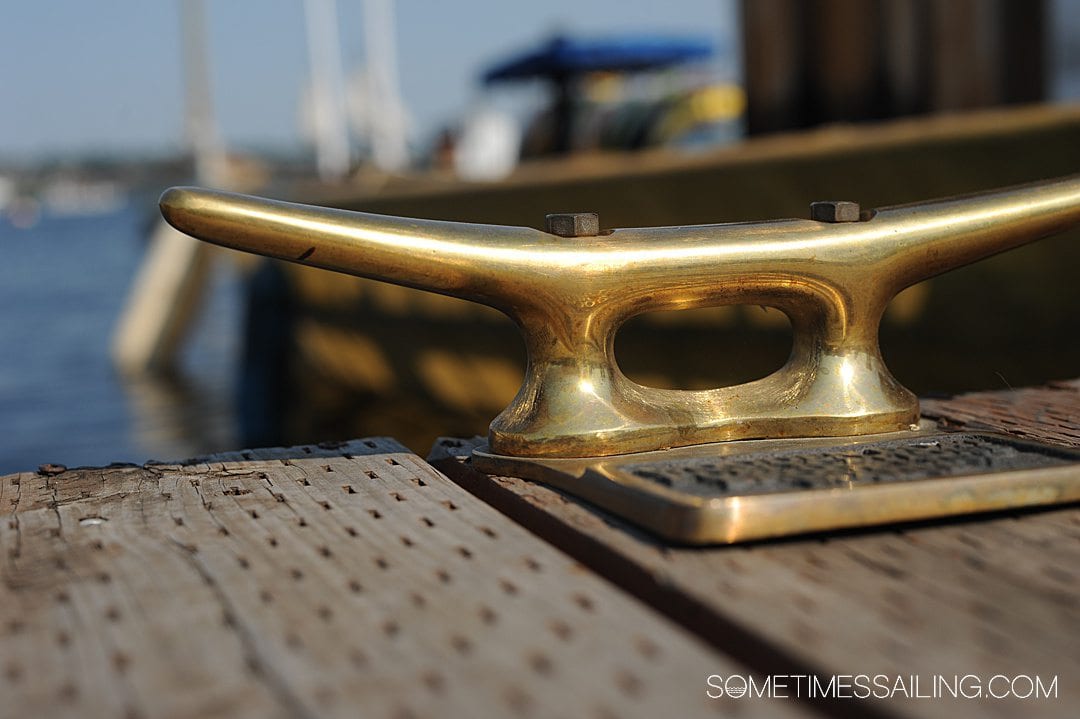
Docking
A captain docks a boat like a driver parks a car.
Berthing
Berthing is a form of docking. It's when a boat pulls into a “parking space” at a pier. That is to say pulls into a boat slip.

Cruise Staff and Ship Crew Terms
Captain
Obvious, of course! The “driver” of any vessel on the water and head honcho in command.
Cruise director
The Cruise Director is often seen as the lead of the ship’s activities and the face of the cruise. (This is not to be confused with a ship’s captain.)
This is the person who’s often the friendliest and most outgoing and welcoming person onboard. (It’s part of their job!) They are usually the voice of the cruise as well, making announcements over the ship’s loudspeakers to inform guests about upcoming activities, safety, and announcements for ports of call.
We have to admit that the Cruise Director who made an everlasting impact on us was Giusseppe of Celebrity Apex. He was amazing.
Cabin steward (“stews”)
A person (or people) who keep the boat's interior tidy and kept. (Housekeeping aboard a ship, if you will.)
Deckhand
A deckhand has the hard job of maintaining the outside of the ship. And it's not easy to do so with the elements constantly hitting the boat, like salt water in many cases.
Bosun
A bosun is considered a rank above deckhand and reports to the captain of the ship.
Check out the interesting hierarchy chart on Crew HQ if you're interested to learn more about who's in charge of who.
Purser
The onboard person who is responsible for billing and monetary transactions.
Porter
The port-side or the curbside person who is responsible for helping with passenger luggage.
Passenger-crew ratio
The ratio of how many passengers, or guests, or onboard to how many crew are onboard. A 1:1 ratio is luxury (in cases where you're assigned a butler onboard, like with Uniworld Boutique Luxury Cruises).
But a passenger-crew ratio over even 3:1 is still pretty good!

Land Terms in Relation to Cruises and Boating
Cruise Terminal
Where you check in for the start of your cruise. Cruise terminals, like the gate for an airplane before ti takes off, are usually for larger cruise ships.
Port of call
A port where your ship stops along your cruise.
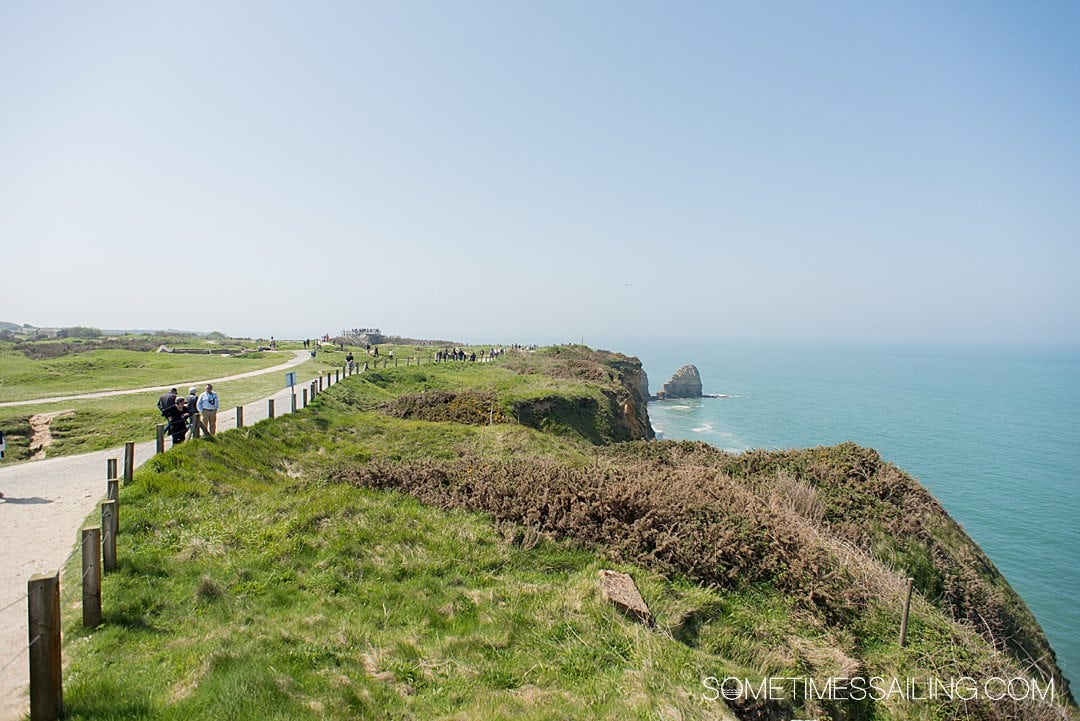
Home port
The port where a ship is most of the time. Kind of liken to our home, which is Raleigh, NC, where we are most of the time.
Cay
A small island your ship may go to. Some cruise lines have their own islands, like Royal Caribbean's Coco Cay (pronounced, “key”) or Disney Cruise Line's Castaway Cay.
Shore excursion
An activity in your port of call once you dock in a location. Shore excursions include walking tours, museum visits, water activities, etc.
Ocean liners usually have shore excursions a la carte from the cost of your cruise. River cruises often included shore excursions with optional upgrades, such as the DiscoverMORE program with Emerald Waterways.
Marina
A place designed for boats to dock. It's like a pretty boat parking lot! It's for smaller ships, boats, and yachts, like the size of a Kontiki Expeditions yacht. A marina is not for large cruise ships or river cruise ships.
Dry-dock
This boat slip can be flooded with water and drained to work on a ship. It's mostly dry-docked during three times of its life:
- Construction/creation
- Remodeling
- Retirement (if it needs to be taken apart or disassembled)
When a ship is docked and lifted out of the water. Usually, it's for something like remodeling the ship.

Organizations Related to Boating and the Cruise Industry
CLIA
Cruise Lines International Association. Some of the things CLIA focuses on is helping set cruise line standards, are advocates for the Cruise Line Industry, and aid in ensuring security at sea.
NOAA
National Oceanic and Atmospheric Association. They are a part of the US Department of Commerce, founded in 1970. They do everything from predicting weather and issuing weather warnings, to helping build sustainable fisheries, to helping protect our coasts.

Additional Ship and Nautical Terminology
Latitude
An imaginary line encircling the earth that rests horizontally, or parallel to the Equator.
Longitude
A vertical imaginary line encircling the earth. They are long, which is how you can remember they go up and down. (As opposed to latitudes, that go east and west.)
Equator
Most people know the equator is an imaginary line that cuts the earth in half, creating the Northern Hemisphere and Southern Hemisphere. But most people can't explain what it is! Here's your answer: It's the equal distance between the north and south poles on earth. It is the latitude degree of zero (0º).
Prime Meridian
Zero degrees, longitude (0º). So where is it, anyway? This imaginary line, from which all degrees east or west are measured, is in Greenwich, England.
Flag country
Country where the ship is registered. For example, when you see a flag flying off the stern of the ship you can easily identify where the ship is from, like Norway. We loved watching the Norwegian flag fly off the aft of the ship during our Polar Fjords, Tromso Boat Tour.
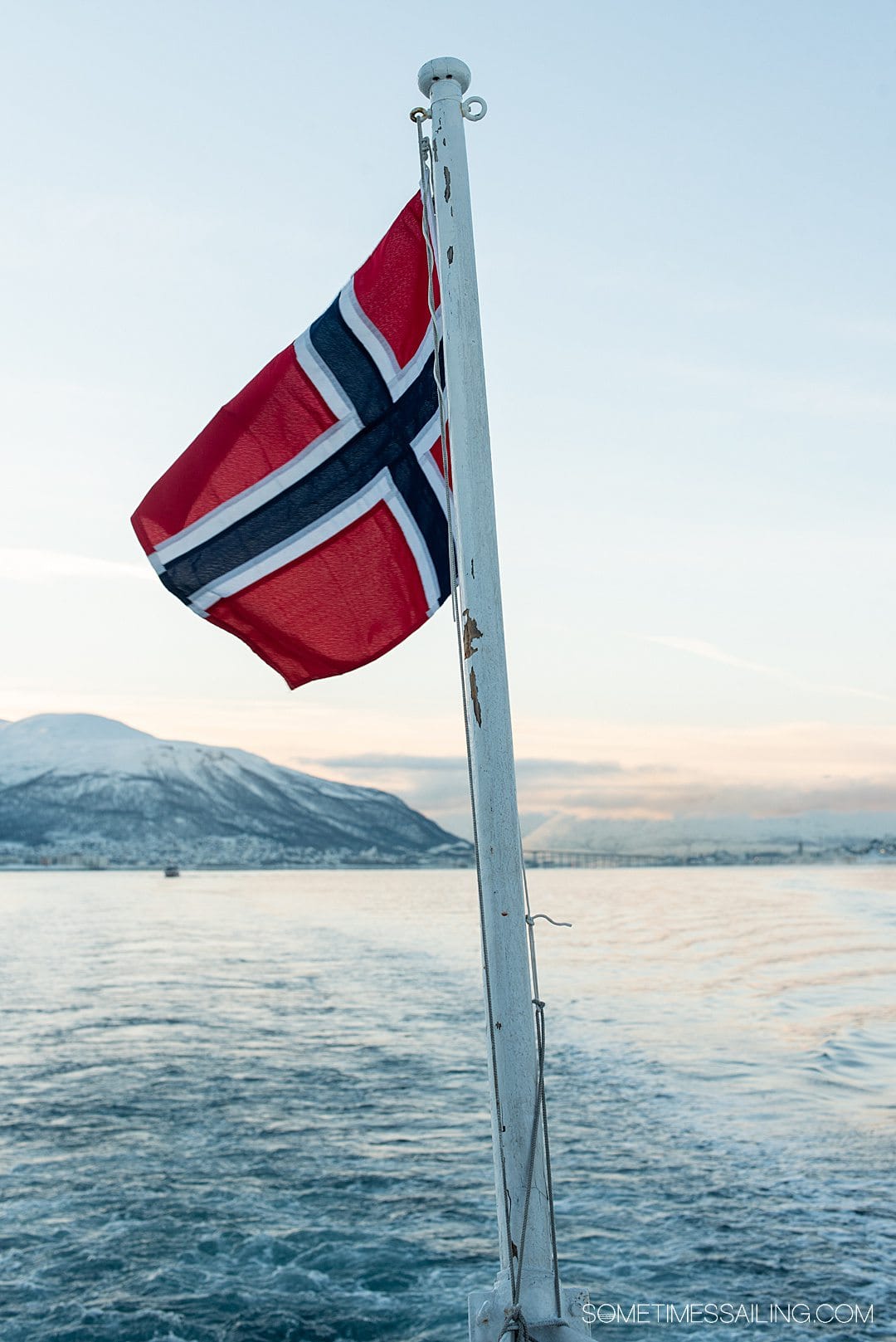
Knots
Units of speed used for how fast or slow a ship is traveling. (One unit = one nautical mile per hour) Abbreviated “kn”. 1 knot = 1.15 miles per hour (mph). You'd say x-amount of miles per hour for a car speed in the US (or kilometers per hour in Europe) but on the sea speed is in knots.
Provisions
Provisions are materials needed on a ship but most generally it refers to food and beverages.
A chef on a barge cruise, for instance, maybe get provisions for the ship at a local market in a small town the boat docks in.
Conversely, it's impossible for a cruise ship with over 100 passengers, like American Cruise Lines or Viking Cruises, to get provisions needed for all the crew and guests at a local market. They order it from a supplier and the ship is stocked in port.
Wake
The little trail of white frothy goodness a ship leaves behind as it moves onward and forward in the water. If you've ever trailed a boat while waterskiing, you stare right at it! It's also fun to watch the wake as you sail away from a port of call.
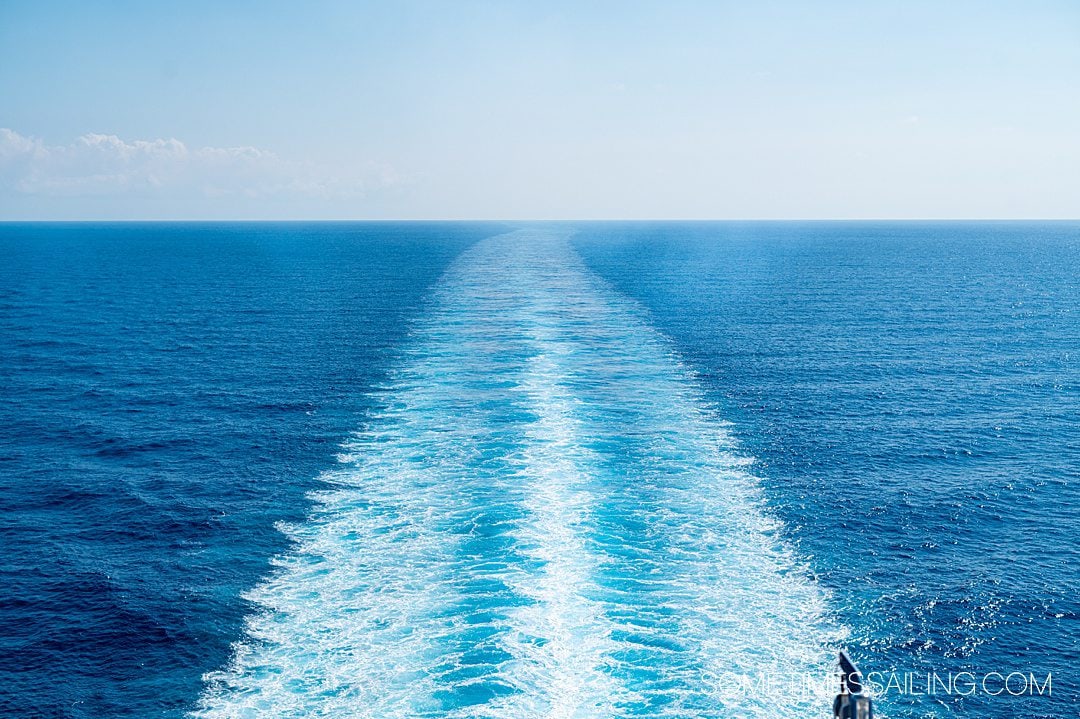
Nautical twilight
This is a specific time of day when the stars can be used to navigate on the seas when the sun is just below the horizon. It's not exactly dusk and it's not night – it's nautical twilight. (There are three different twilights if you want to get geeky over it. But for now, we'll say it's civil twilight, then nautical twilight, then astronomical twilight and leave it there.)
Technically speaking, the sun is between 6 to 12 degrees below the horizon during nautical twilight. The length of twilight depends on what latitude you are at on Earth. (The length of daylight depends on the same.)
If the weather is good, a captain can see the horizon line of the earth in the distance during nautical twilight and bright stars. This would enable him or her to use astronomy to navigate. Or celestial navigation, as it's called.
Nautical dawn
The opposite of nautical twilight is nautical dawn. This is when the sun is 6 degrees
Celestial navigation
Using the position of the sun, stars, and planets to navigate.
Locks
Consider a lock a water escalator or elevator. They're engineering feats that help a boat reach a new water level. They are opened or closed to control this.
A ship goes into a lock, then the lock is flooded with water to make the ship (and water level) rise. The lock in front of the ship is then opened so the ship can pass through the waterway on the new level and proceed on its journey.
Tender (also known as a dinghy, skiff, water shuttle)
A small boat that takes passengers from a larger ship to another location (like ashore). It literally “tends” to passengers.
Often, if a cruise ship can't dock at a port due to its size, a tender will take you from where your cruise ship drops anchor in the ocean to drop you off at the port.
Zodiacs
These are boats like tenders, but they're inflatable. Picture of a kind of white-water rapids inflatable boat! They're open-air and can navigate shallow waters, which is great for excursions.
They are named, “Zodiacs” after the company that invented them. They were originally created in the 1930s for military use and found a place in the leisure market for passenger cruise ships.

For more cruise and boating inspiration check out:
- The Best Cruise Apps for Trip Prep and to Use While On Vacation
- 5 Reasons We Have Our Eyes on United States River Cruises in 2021
- Tromso Boat Tour in Norway: A Favorite Excursion in the Arctic Circle

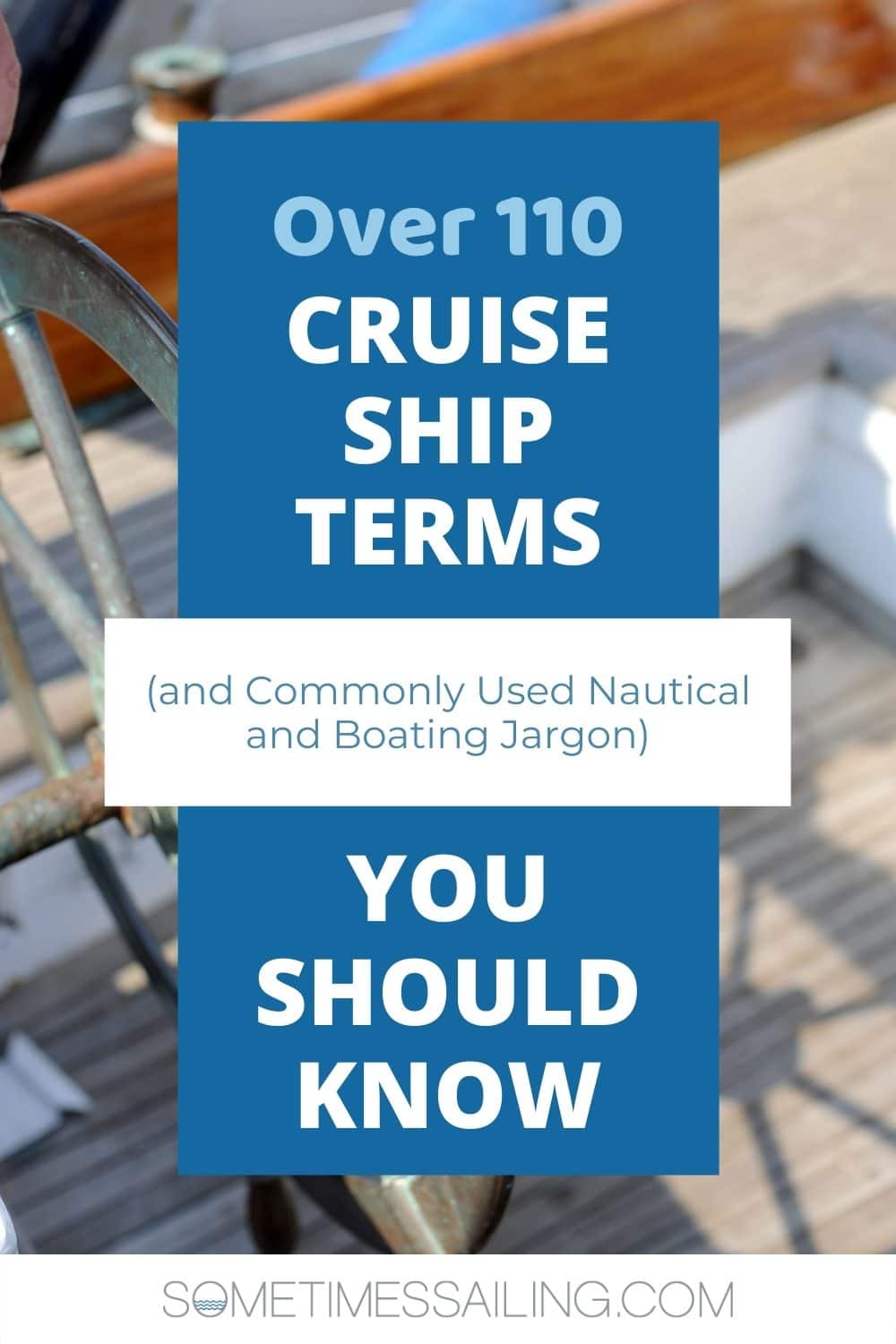
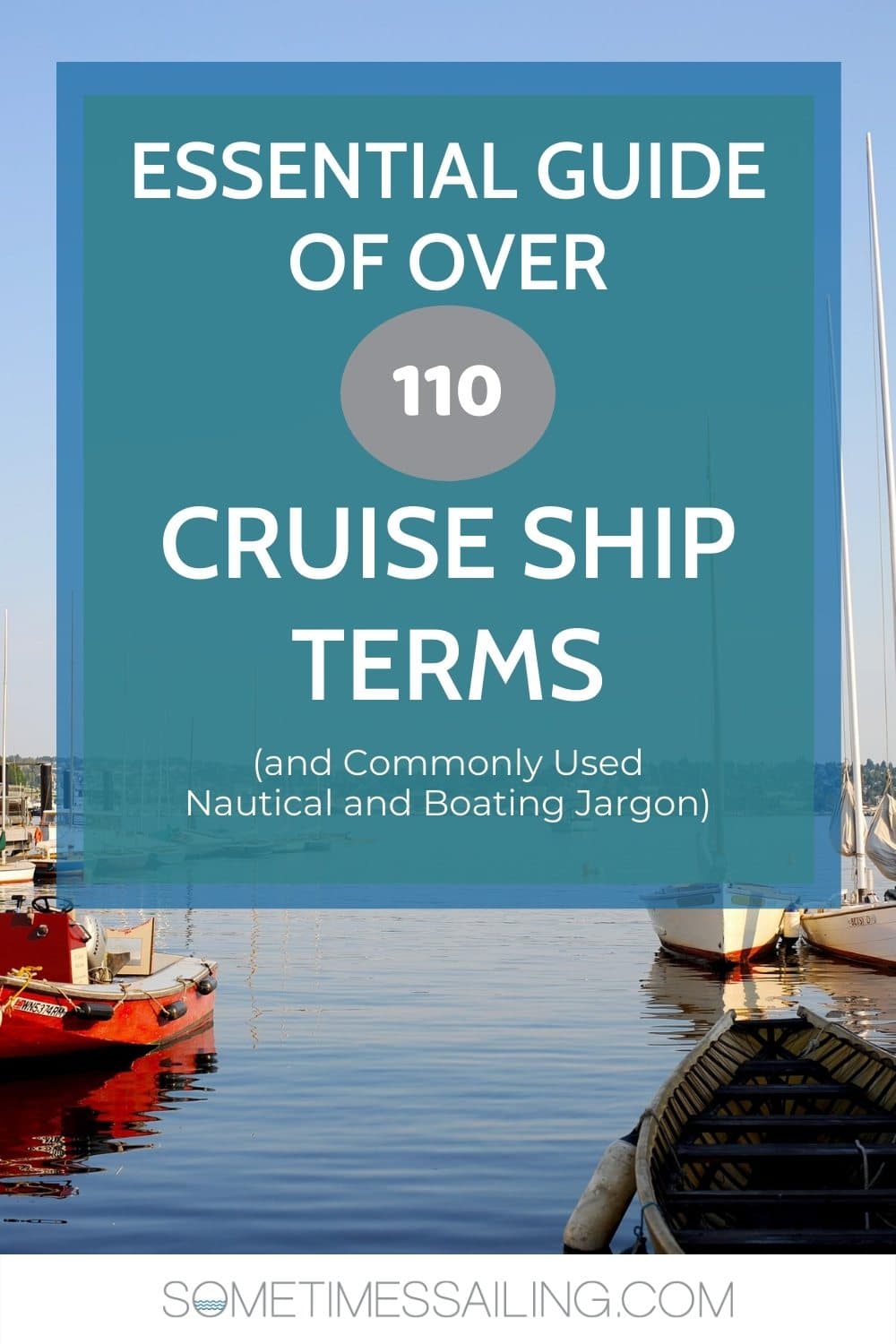
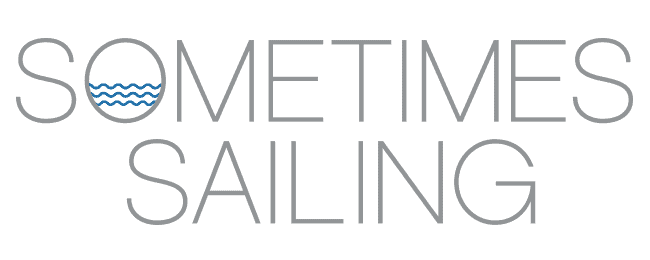

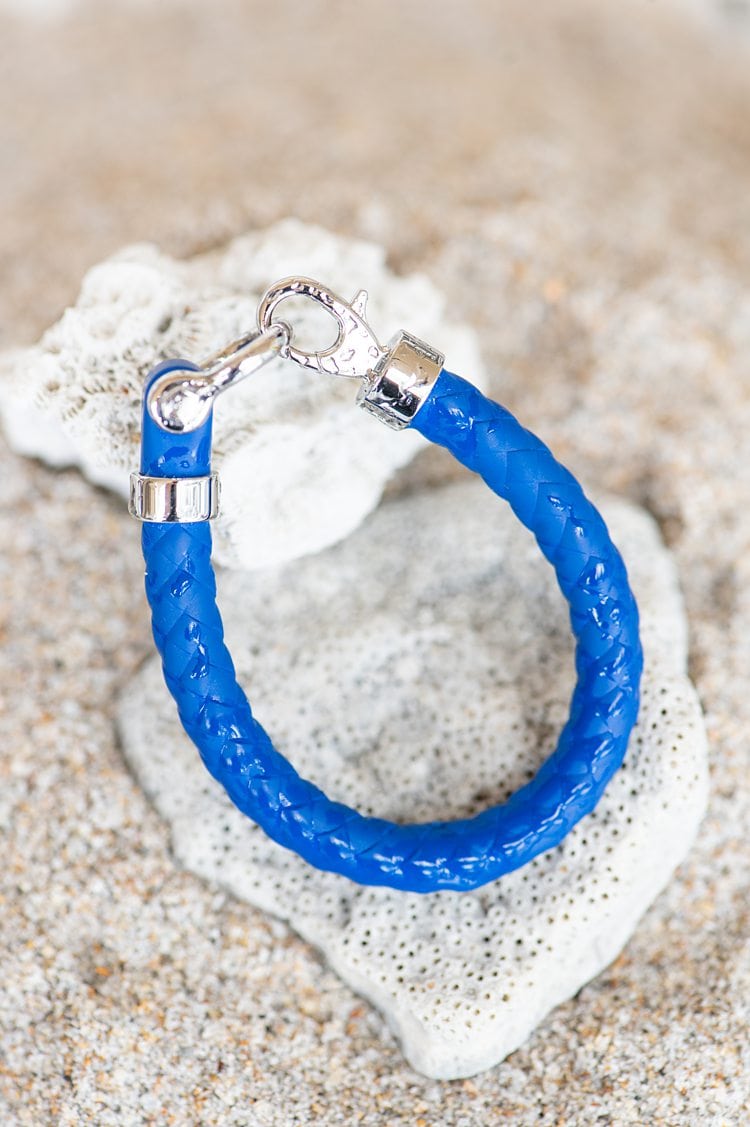
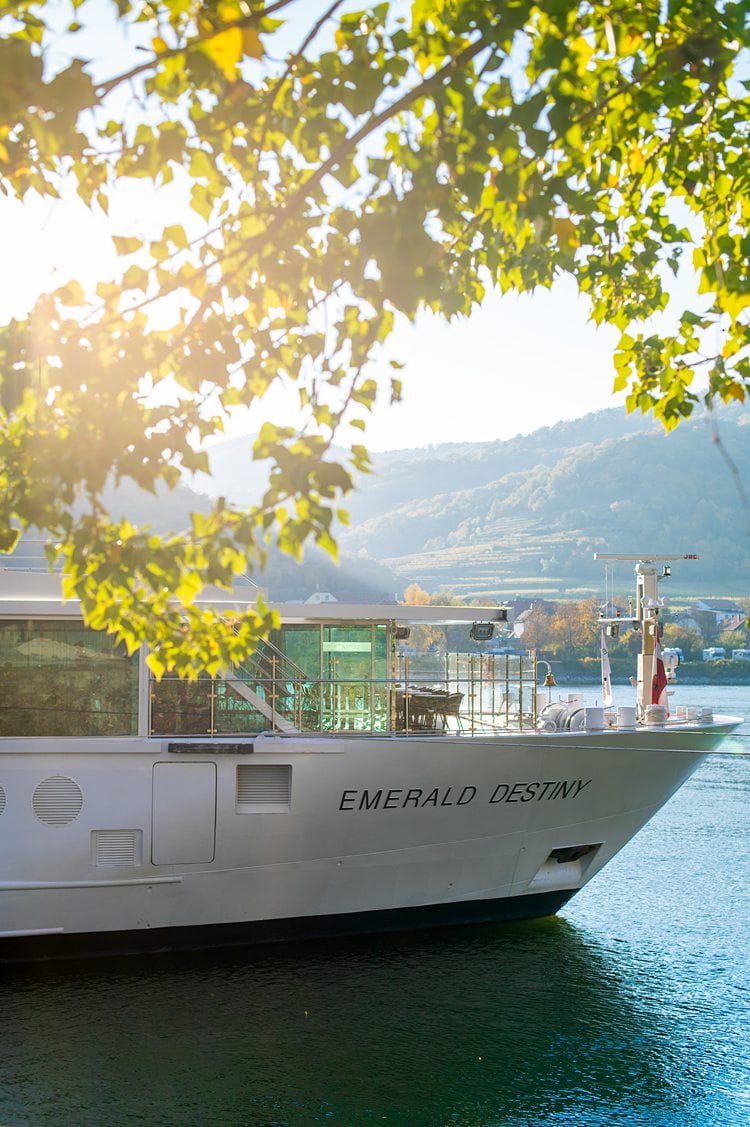
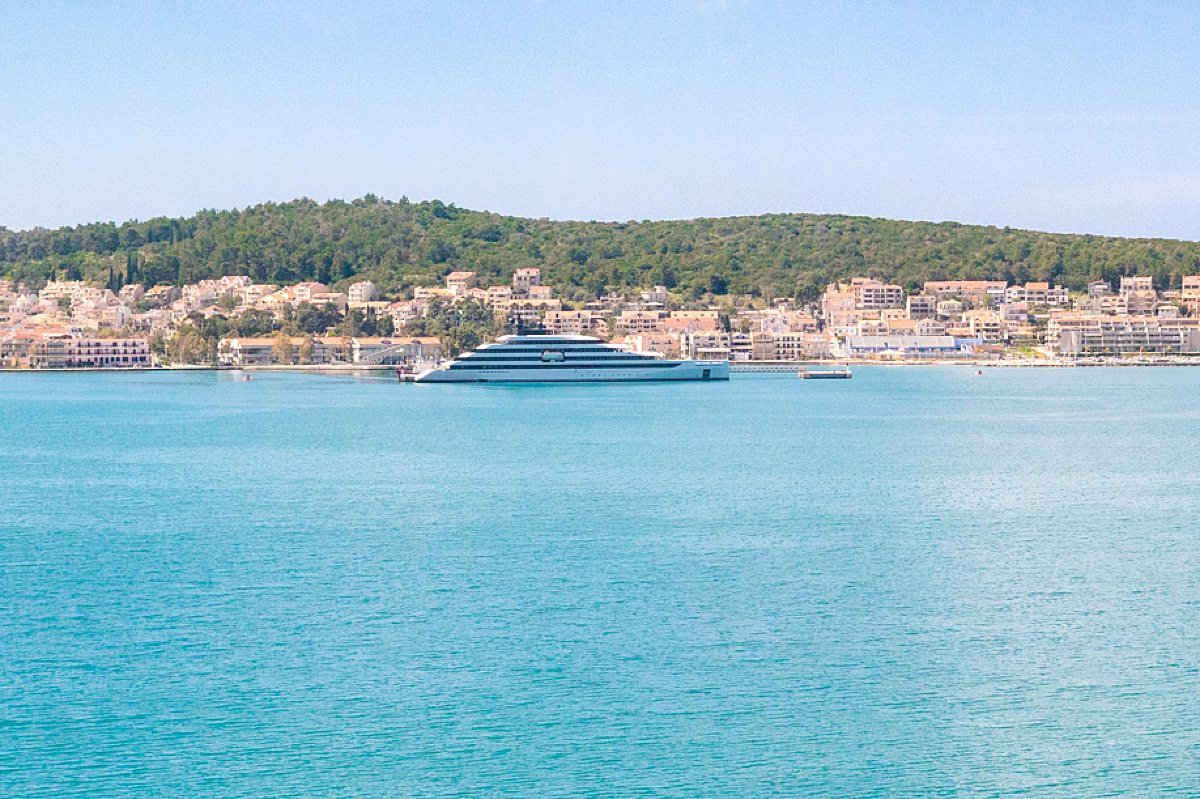
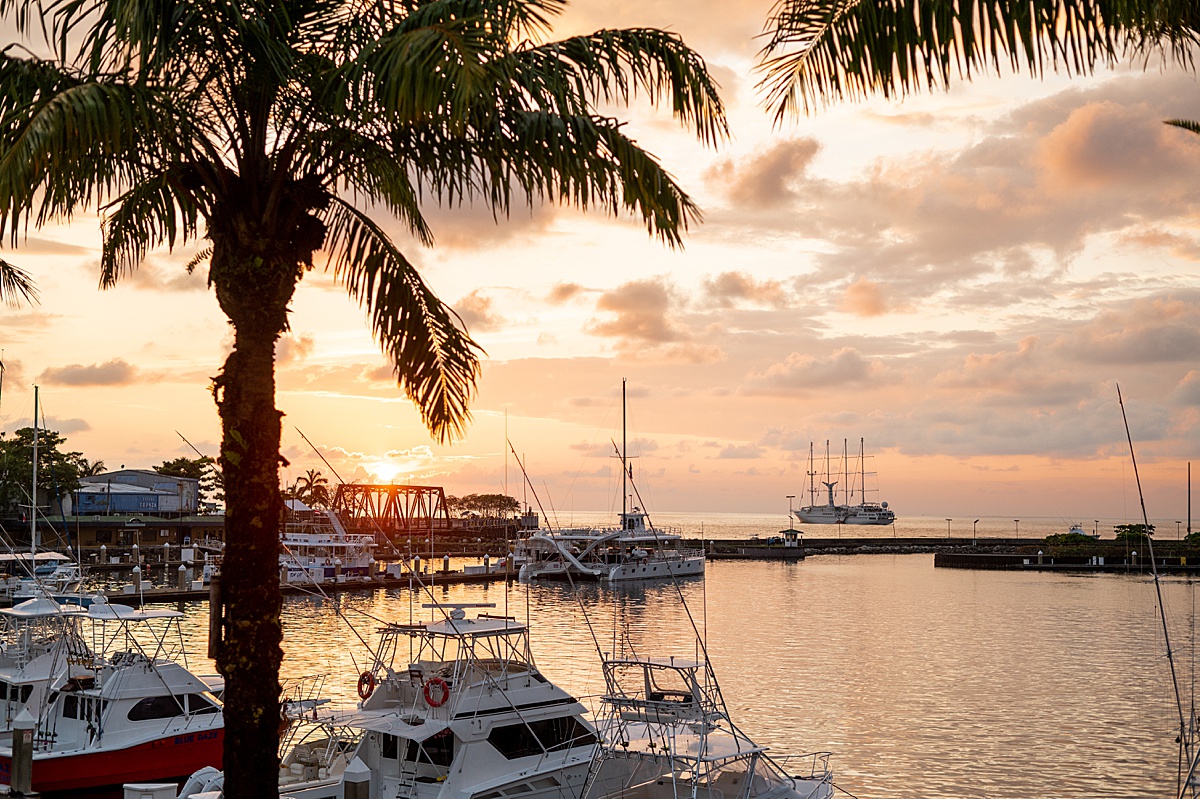
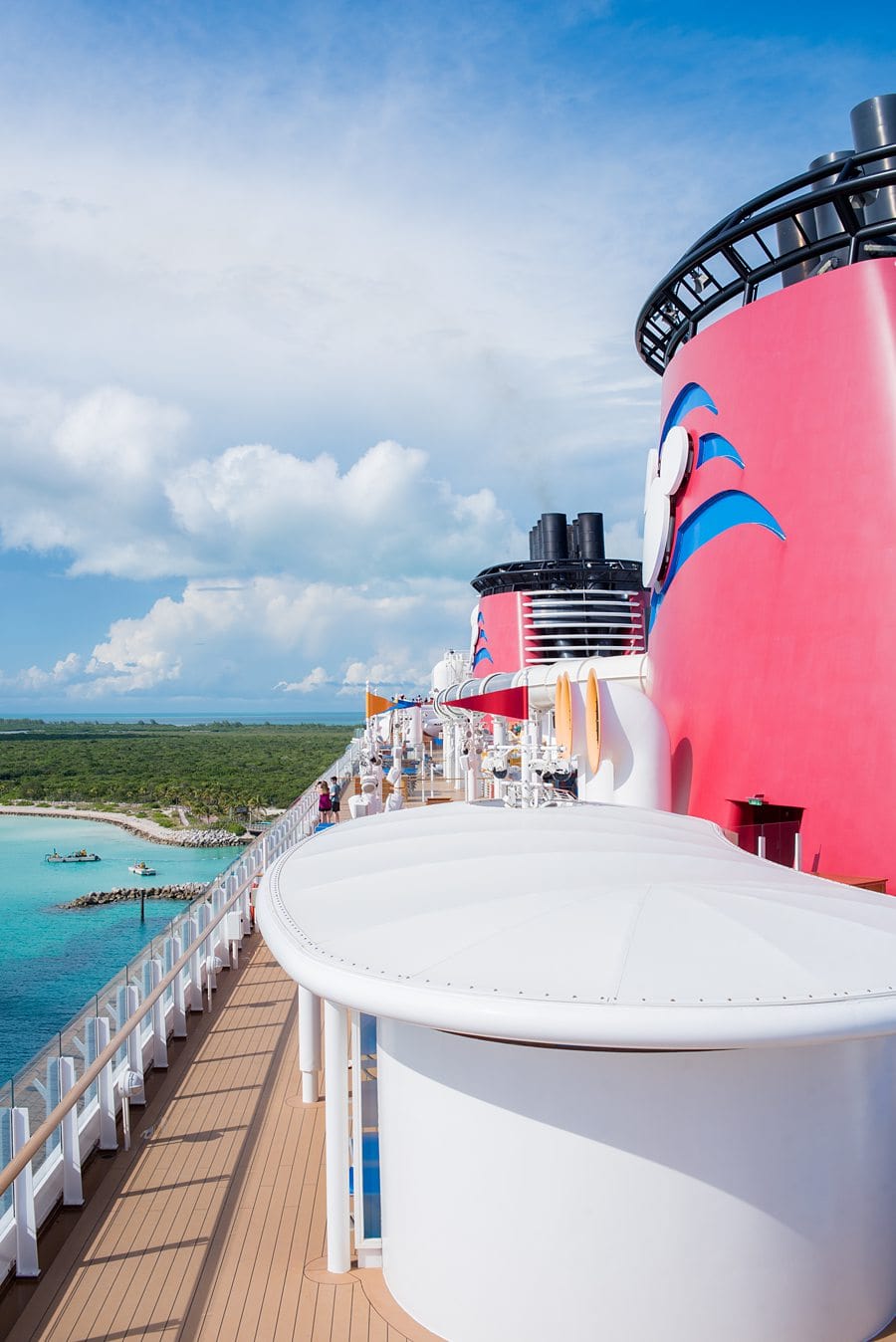
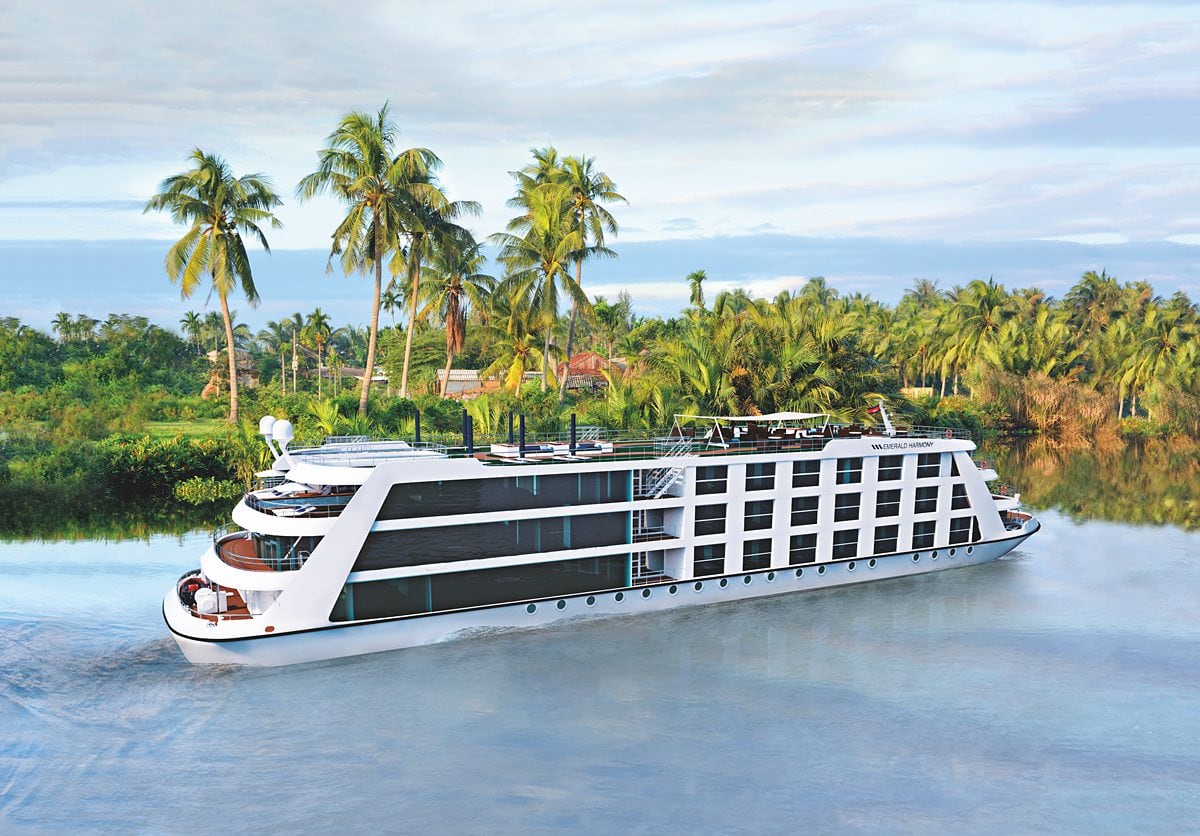
Hi! Just a heads up that you have port and starboard mixed up at the beginning of your definitions but then you explain it correctly afterwards. Not sure if I’m missing something. I reread it multiple times.
This information was all very helpful! Thank you!!! I’ve been on one cruise before but my kids were 14months and 3yrs old and the whole trip was a blur. This time my kids will be 11 and 12 and we’ll be able to really enjoy navigating the ship more. Lots of great info here and on your other posts.
Thank you SO much, Chelsea! You’re right and we updated things. 😉 I’m glad to hear you’ll have a great time navigating the ship on your next cruise now that your kids are older. We so appreciate your thoughtful comment!